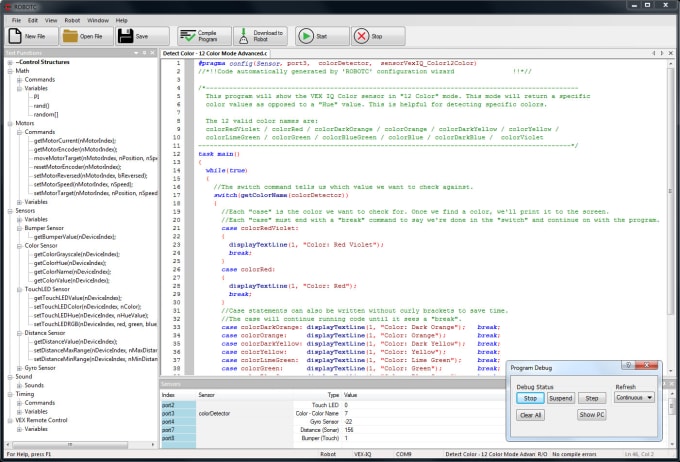
It does, however, feature an image of an EV3 brick that can provide limited feedback to simulate some of the brick’s normal running characteristics. In addition to supporting text-based programming, QEV3BotSim is visually quite different to Open Roberta Lab. Various simulator packages have been developed to fill this need, such as the Open Roberta Lab web-based system using the NEPO drag-and-drop programming language. Stan Simmons, an Associate Professor at Queen’s University in Canada, has developed a free Windows-based LEGO EV3 simulator as an adjunct to his physical robot classes, QEV3Bot Simulator.Īlthough the LEGO Mindstorms NXT and EV3 Software packages are quite elaborate and extensive, they do not offer users the ability to test their programs in a virtual environment. QEV3BotSim can be used as an adjunct to labs based on the physical Bots, or can even be used as a standalone resource for an introductory programming course if funds are not available for purchasing actual physical robots.Ĭlick on the zip file below, then in the Google Drive window that opens, click the small "Download" button that appears in the upper right of that window.- the zip file contains the executable, Quick and Full help files, and folders of sounds and bitmap images mirroring those available on the EV3 itself.QEV3BotSim Virtual programming and testing screen All global and local user variables and arrays, as well as relevant built-in EV3 variables and arrays, are displayed during execution. Users can Run, Halt, Step, Step-Into, Step-Out-Of, Step-Over and RunTo a breakpoint for debugging purposes. Parse errors and execution-time errors are reported with simple and clear error messages. Once loaded into QEV3BotSim, programs can be tested, and can be easily modified in a syntax-colourized Edit/View window, then recompiled for re-testing.

QEV3BotSim allows the user to configure the connection of up to four sensors chosen from the set of eight available sensors mounted on the Bot (see About the Bot).

This is a free, educational, real-time Windows TM based graphical simulator that accurately models a QEV3Bot running any RobotC program on one of three chosen walled "PlayFields":ġ) A flat tiled lab floor, with square 1-foot white tiles having back edges.Ģ) An un-tiled floor with a sloped portion up to a mezzanine level (for exercising the 3-axis accelerometer sensor), and with a black floor track (for liine-following).ģ) A user-configurable maze where walls and black floor lines (for line-following) can be placed.


 0 kommentar(er)
0 kommentar(er)
